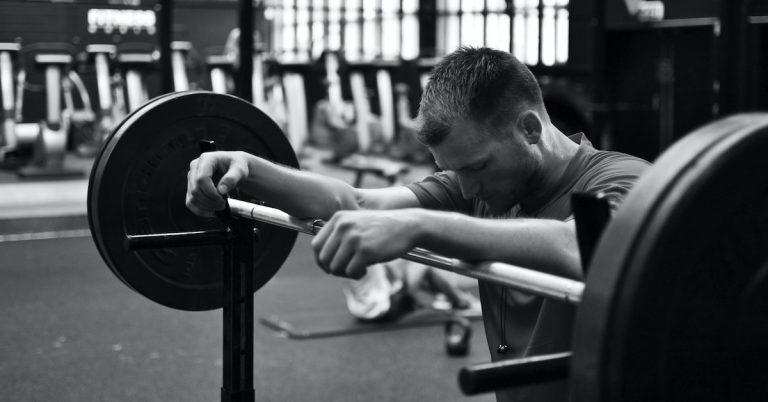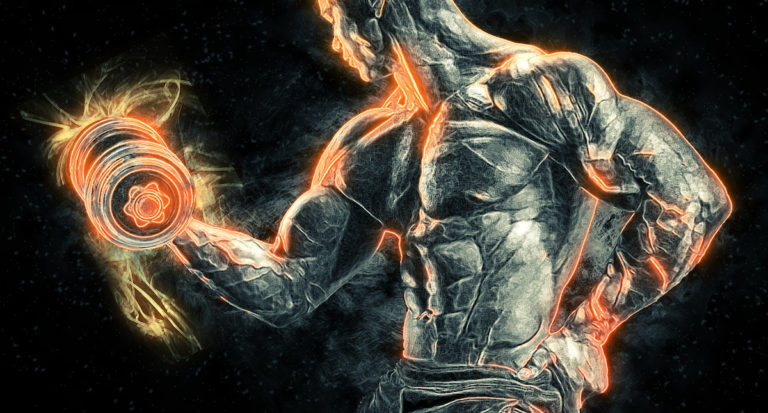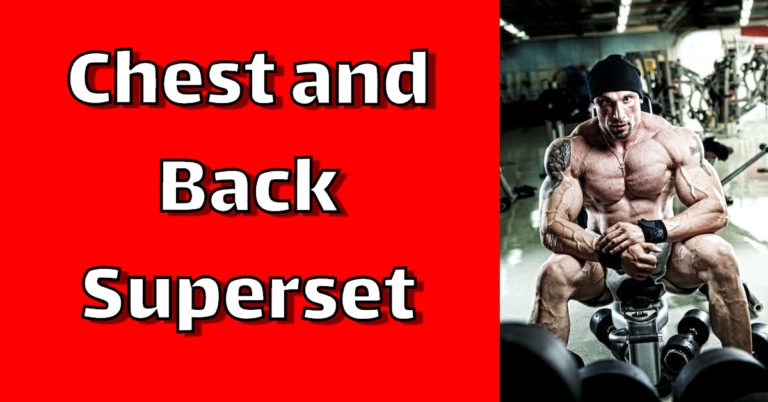Calves are stubborn. They’re like that boxer with an iron chin. If you want some “knockout” growth, you need to hit them hard with methods that work, you need to hit them from all angles, and you need to hit them often. Only then will you win the battle with your fiercest foe. Let’s take a look at what your training camp will entail leading up to the “big day!”
Methods That Work
If you want to build massive calves, there are many excellent training methods available such as the following:
- antagonist supersets where you pair ankle extension with flexion as I outline in my Supersets for Super Results article
- contrast supersets where you pair slow eccentric calf raises with explosive jumps using either a barbell, hex-bar, dumbbells or sandbag, or combine slow and fast speeds in one movement as I discuss in my article Time To Explode!
- contrast supersets where you pair paused one-leg calf raises in full range of motion with short, quick hops as mentioned in this Q&A post
- tri-set methods like the ones featured in my book The Elite Trainer or in my column The Cat’s Lair, which involve a different rep bracket and tempo for each exercise to target high-, medium- and low-threshold motor units
- drop sets as discussed in my Pop ‘Em Out Muscles article
Another method inspired by Nelson Montana in his book The Bodybuilding Truth involves a form of rest-pause training, or basically one long set with interrepetition rest intervals. The goal with this method is to perform 75-100 reps using a 20RM load. If incorporated properly, you could do it every workout. We’ll use this method in our upcoming training camp. I’ll show you how to do it in a minute.
Hit Them From All Angles
When it comes to calf training, most people in the gym seem to be creatures of habit. How can you expect different results if you keep doing the same things over and over again? When you do standing calf raises, for instance, do you ever adopt a close or wide stance, or are your feet always hip-width apart? Do you ever do seated calf raises one leg at a time? Do you ever train the tibialis anterior, the muscle on the front part of the lower leg? For maximum growth, you need to hit your calves from all angles, including front and back, wide and close stance, feet rotated out and in, unilateral and bilateral, and seated, standing and bent-over.
Hit Them Often
Success leaves clues. If you want to build a nice set of arms and shoulders, train like a gymnast. For glutes and hamstrings, train like a sprinter. And as I expose in my article The Answer for Massive Calves, bodybuilders can build serious calves if they train like dancers. The dancer’s secret for well-developed calves is that they perform repetition after repetition of bodyweight calf raises almost every day. The high volume conducted on a frequent basis results in monstrous calves. Train your calves once a week at the end of your workout, there’s no need to grow. Train your calves at the beginning of every workout, they’ll get the message!
Don’t worry about overtraining. In The Variable Recovery Training System, I point out that smaller body parts such as calves and forearms recover very quickly and can be trained often, especially if they’re a lagging body part. The key to high-frequency training is to use an appropriate load and tempo. You don’t want to go too heavy, nor do you want to accentuate the eccentric (lowering) action. That type of training induces a high amount of muscle damage and soreness and prolongs recovery. A muscle can take a “beating” pretty much every day if you stimulate it, not annihilate it!
Training For The Big Show
Okay, here’s a great plan of attack for your calves in your next routine. Use a 3-day rotation that looks like this:
Day 1 – Standing Calf Raises
Day 2 – Seated Calf Raises
Day 3 – Seated Tibialis Raises
You’re going to use the rest-pause method that I mentioned earlier. For each exercise, you’ll do 1 extended set of 75-100 reps at the beginning of every workout. Here’s how it works:
Load a calf/tibialis raise machine with a weight that you would normally use for a 20-rep set. Start the set and do as many reps as you can. Once you hit failure, rest 10 seconds, and then continue until you can’t do another repetition. Proceed in this manner until you achieve a total of 75 reps. You may only get a few reps out at a time toward the end. That’s fine. Just keep going until 75 reps are completed. It should take you no longer than 4 or 5 minutes to accomplish the task.
Aim for a total of 75 reps on the first workout, and increase the number by 5 reps each workout until you reach 100 reps on the sixth workout for that movement. It should look like this:
Workout #1 – 75 reps
Workout #2 – 80 reps
Workout #3 – 85 reps
Workout #4 – 90 reps
Workout #5 – 95 reps
Workout #6 – 100 reps
After you accomplish 100 reps, increase the weight the following workout to your new 20RM load, and start over again at 75 reps.
You can use the 3-day calf rotation with any whole-body routine or body part split routine, just make sure to start every workout with one of those calf movements, and keep cycling through them each training session.
A word of warning: Although the intensity is not that high, the volume is. You’re going to be sore, especially the first week. I recommend that you use a fairly high dose of branched-chain amino acids during your workouts. Also, try to incorporate a restoration method every day like self-massage (I use a tool known as The Stick for this purpose), contrast showers (point a removable shower head toward your calves and cycle between hot and cold for a minute each), salt baths, arnica cream (use a laser pointer over the area for a greater effect as I mention in 5 Radical Ways to Stop Hurting), and so on. I go over a number of these methods in my book Mass Explosion.
There you go! If you want to transform your calves into “CALVES,” then hit them hard from all angles and hit them often. And if you really want to boost the results, there’s something sitting in your medicine cabinet that you can use during training that may add as much as an inch to your calves! I’ll reveal what it is on Thursday.

My Favorite Leg Finisher
Everything in context! I’m squatting with 225 pounds in the video below. It doesn’t look like much weight except that

How to Get a Biceps Vein
Growing up, all I ever wanted was the “biceps vein!” I wanted it even more than huge biceps. Of course,

Chest and Back Superset
A “super” combo to finish off an upper-body workout involves the standing cable crossover and the bent-over dumbbell lateral raise.
follow
Error: No feed with the ID 2 found.
Please go to the Instagram Feed settings page to create a feed.
